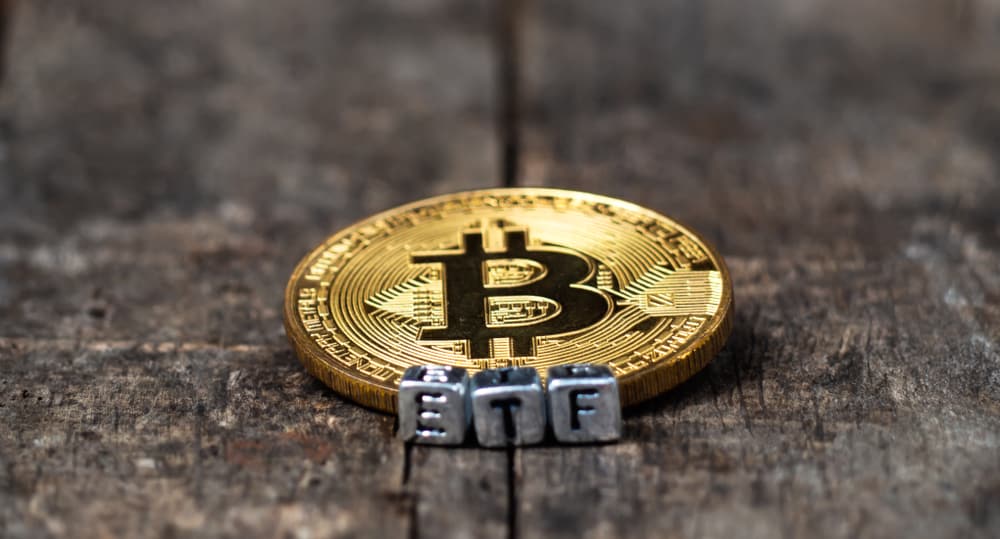Bitcoin ETFs See Biggest Inflows in Over a Month as Selling Pressure Eases
18.03.2025 14:00 1 min. read Alexander Stefanov
U.S. spot bitcoin ETFs experienced a surge in demand on Monday, recording $274.6 million in net inflows—their highest since early February.
This marks a sharp reversal from recent weeks, during which these funds faced sustained selling pressure, shedding approximately $5.4 billion over five consecutive weeks, according to Farside Investors.
Analysts attribute the rebound to institutional portfolio adjustments at the end of the quarter and increased interest in lower-cost ETFs. Crypto analyst Rachael Lucas noted that Bitcoin’s price stability and renewed institutional confidence likely played a role in driving inflows.
Five Bitcoin ETFs saw net inflows on Monday, with Fidelity’s FBTC leading the pack at $127.3 million, followed by Ark and 21Shares’ ARKB, which attracted $88.5 million. BlackRock’s IBIT, the largest Bitcoin ETF by assets, gained $42.3 million, while Bitwise’s BITB and Grayscale’s Mini Bitcoin Trust also reported inflows.
Trading volume across Bitcoin ETFs reached $1.87 billion for the day, with total cumulative inflows standing at $35.58 billion since their launch. Meanwhile, BTC’s price has steadied around $83,000 after a volatile stretch that saw swings between $78,500 and $94,000.
Lucas cautioned that market turbulence may persist as quarter-end approaches. Institutional rebalancing could sustain inflows, but any renewed price dips might trigger another round of outflows.
-
1
ARK 21Shares Bitcoin ETF to Undergo 3-for-1 Split to Attract Retail Traders
03.06.2025 10:00 2 min. read -
2
Bitcoin ETFs See $268M in Outflows Over Three Straight Days Amid Institutional Cooldown
03.06.2025 13:05 1 min. read -
3
Bitcoin’s Liquidity Tightens as Institutional Demand Builds, Analysts See Bullish Potential
31.05.2025 13:00 1 min. read -
4
Truth Social Seeks to Launch Spot Bitcoin ETF via NYSE Arca
04.06.2025 17:00 2 min. read -
5
Crypto Market Dips Amid Rising Tensions After U.S. Military Action in Iran
22.06.2025 15:00 1 min. read
Geopolitical Shockwaves Hit Ethereum Hard While Bitcoin Stays Resilient
Crypto markets were the first to absorb the shock of escalating tensions between the U.S. and Iran, as news of targeted airstrikes on nuclear facilities sent ripples across the digital asset landscape.
Corporate Bitcoin Buying Accelerates as Firms Raise Billions to Stack BTC
A fresh surge of corporate activity is putting Bitcoin at the center of modern treasury strategy.
Crypto Market Dips Amid Rising Tensions After U.S. Military Action in Iran
Crypto markets saw a sharp decline over the weekend after the US launched its first military intervention in the conflict between Iran and Israel late on Saturday night.
Real Estate Giant Plans $300M Bitcoin Purchase
Grant Cardone is adding an entirely new layer to his real-estate empire: a war chest of Bitcoin big enough to rival small hedge funds.
-
1
ARK 21Shares Bitcoin ETF to Undergo 3-for-1 Split to Attract Retail Traders
03.06.2025 10:00 2 min. read -
2
Bitcoin ETFs See $268M in Outflows Over Three Straight Days Amid Institutional Cooldown
03.06.2025 13:05 1 min. read -
3
Bitcoin’s Liquidity Tightens as Institutional Demand Builds, Analysts See Bullish Potential
31.05.2025 13:00 1 min. read -
4
Truth Social Seeks to Launch Spot Bitcoin ETF via NYSE Arca
04.06.2025 17:00 2 min. read -
5
Crypto Market Dips Amid Rising Tensions After U.S. Military Action in Iran
22.06.2025 15:00 1 min. read


